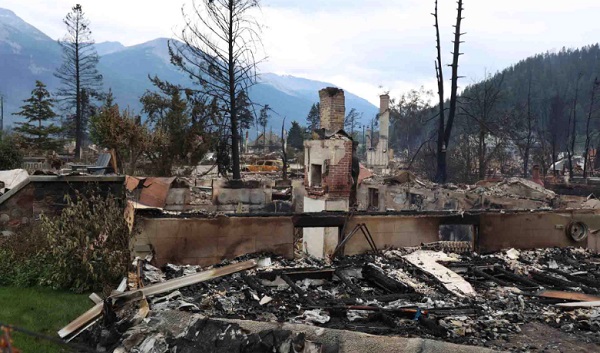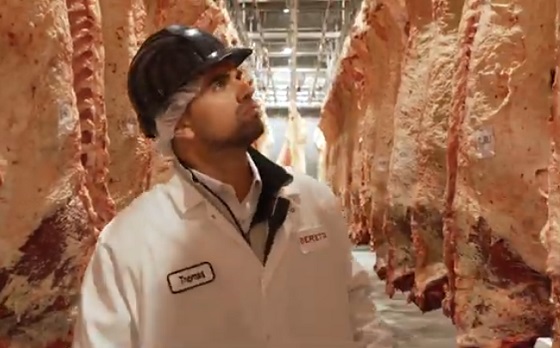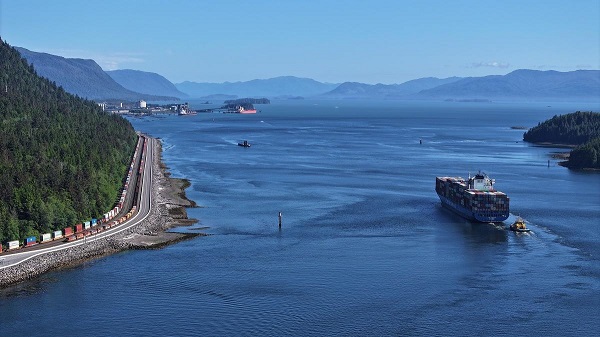Alberta
Province providing 250 modular homes to help ease housing crisis in Jasper

Supporting Jasper residents’ return home |
Alberta’s government continues to support recovery efforts in Jasper and is helping residents return to the community with $112 million in funding for interim housing.
Alberta’s government continues to support recovery efforts in Jasper and is helping residents return to the community with $112 million in funding for interim housing.
Alberta’s government is committed to ensuring Jasper residents are supported as the community recovers from the summer’s wildfire. To support rebuilding efforts in Jasper, government is committing $112 million to build interim housing for displaced Jasper residents and residents of Pine Grove Senior Citizens Manor.
Work on the sites in Jasper has already begun, and the first residents are expected to begin moving in as early as January 2025. Homes in Jasper will be available for essential service workers and support service workers, and other eligible Jasper residents who lost their homes and are employed in the area. Alberta’s government will ensure that interim homes are ready for eligible residents as quickly and efficiently as possible.
“Our entire country grieved when wildfire ravaged Jasper this past summer. We know the rebuilding process takes time, and we’re doing all we can to support Jasper’s recovery. Most of all, people want to return home, and the funding we have approved will speed up that process so folks can rebuild their lives and move forward sooner.”
“We know that Jasper residents are eager to get back home and Alberta’s government is committed to ensuring they have the supports they need throughout this rebuilding effort. When ready, these interim homes will address the immediate housing need in Jasper and provide a short-term housing option for those who are working in the town doing the critical work needed to support this rebuild.”
To support the interim housing needs of Jasperites, the government is supporting the construction of modular homes. It is estimated that this portion of the provincial funding will build 250 modular homes for eligible displaced Jasper residents. Modular homes are constructed off-site, in a controlled environment, to allow for all-season construction and accelerated schedules. They are installed using permanent foundations that ensure the safety and comfort of the occupants.
Interim housing units in Jasper will be provided at market rent, and applications and eligibility details will be released in the future. Units in Jasper will be sold at market value when they are no longer required for interim housing for Jasper recovery.
“This interim housing is a much-needed step forward in getting the community of Jasper back on track and getting people into homes. Alberta’s government will continue to work with the town and our partners to restore Jasper as quickly as possible.”
“On behalf of the people of Jasper, I extend our sincere gratitude to the Government of Alberta for their critical support in funding interim housing as we work to rebuild Jasper. This housing isn’t just about the buildings, it’s directly linked to our social and economic recovery including the mental well-being of the community as a whole.”
Alberta’s government is also supporting the residents of Pine Grove Manor with interim housing in Hinton. Pine Grove Manor was destroyed by the fire and this interim housing will keep residents close to their community while the seniors home is rebuilt. Up to 25 units of modular housing will be built for seniors in Hinton on a site that was given to the project by the Town of Hinton. These units in Hinton will later be used as affordable housing for the community. Work on these sites is expected to begin in January and the first seniors are expected to begin moving in as early as April 2025.
“The Evergreens Foundation is proud to work together with the province to move forward on this project with haste. We continue to keep the needs of the seniors who built our province in the forefront as we work through the Jasper recovery.”
A request for proposals will be released on both of these projects as the next steps in this process. Funding from Alberta’s government will be contributed to these projects over two fiscal years.
Quick facts
- The 2024 Jasper wildfire complex destroyed or damaged around 30 per cent of structures in Jasper, including the Pine Grove Seniors Citizens Manor, a government-owned building.
- Wildfire is an insurable event and insurance can cover costs for interim housing for insured individuals.
Agriculture
Lacombe meat processor scores $1.2 million dollar provincial tax credit to help expansion

Alberta’s government continues to attract investment and grow the provincial economy.
The province’s inviting and tax-friendly business environment, and abundant agricultural resources, make it one of North America’s best places to do business. In addition, the Agri-Processing Investment Tax Credit helps attract investment that will further diversify Alberta’s agriculture industry.
Beretta Farms is the most recent company to qualify for the tax credit by expanding its existing facility with the potential to significantly increase production capacity. It invested more than $10.9 million in the project that is expected to increase the plant’s processing capacity from 29,583 to 44,688 head of cattle per year. Eleven new employees were hired after the expansion and the company plans to hire ten more. Through the Agri-Processing Investment Tax Credit, Alberta’s government has issued Beretta Farms a tax credit of $1,228,735.
“The Agri-Processing Investment Tax Credit is building on Alberta’s existing competitive advantages for agri-food companies and the primary producers that supply them. This facility expansion will allow Beretta Farms to increase production capacity, which means more Alberta beef across the country, and around the world.”
“This expansion by Beretta Farms is great news for Lacombe and central Alberta. It not only supports local job creation and economic growth but also strengthens Alberta’s global reputation for producing high-quality meat products. I’m proud to see our government supporting agricultural innovation and investment right here in our community.”
The tax credit provides a 12 per cent non-refundable, non-transferable tax credit when businesses invest $10 million or more in a project to build or expand a value-added agri-processing facility in Alberta. The program is open to any food manufacturers and bio processors that add value to commodities like grains or meat or turn agricultural byproducts into new consumer or industrial goods.
Beretta Farms’ facility in Lacombe is a federally registered, European Union-approved harvesting and meat processing facility specializing in the slaughter, processing, packaging and distribution of Canadian and United States cattle and bison meat products to 87 countries worldwide.
“Our recent plant expansion project at our facility in Lacombe has allowed us to increase our processing capacities and add more job opportunities in the central Alberta area. With the support and recognition from the Government of Alberta’s tax credit program, we feel we are in a better position to continue our success and have the confidence to grow our meat brands into the future.”
Alberta’s agri-processing sector is the second-largest manufacturing industry in the province and meat processing plays an important role in the sector, generating millions in annual economic impact and creating thousands of jobs. Alberta continues to be an attractive place for agricultural investment due to its agricultural resources, one of the lowest tax rates in North America, a business-friendly environment and a robust transportation network to connect with international markets.
Quick facts
- Since 2023, there are 16 applicants to the Agri-Processing Investment Tax Credit for projects worth about $1.6 billion total in new investment in Alberta’s agri-processing sector.
- To date, 13 projects have received conditional approval under the program.
- Each applicant must submit progress reports, then apply for a tax credit certificate when the project is complete.
- Beretta Farms has expanded the Lacombe facility by 10,000 square feet to include new warehousing, cooler space and an office building.
- This project has the potential to increase production capacity by 50 per cent, thereby facilitating entry into more European markets.
Related information
Alberta
Alberta Next: Alberta Pension Plan

From Premier Danielle Smith and Alberta.ca/Next
Let’s talk about an Alberta Pension Plan for a minute.
With our young Alberta workforce paying billions more into the CPP each year than our seniors get back in benefits, it’s time to ask whether we stay with the status quo or create our own Alberta Pension Plan that would guarantee as good or better benefits for seniors and lower premiums for workers.
I want to hear your perspective on this idea and please check out the video. Get the facts. Join the conversation.
Visit Alberta.ca/next
-

 Energy1 day ago
Energy1 day agoB.C. Residents File Competition Bureau Complaint Against David Suzuki Foundation for Use of False Imagery in Anti-Energy Campaigns
-

 Alberta2 days ago
Alberta2 days agoAlberta uncorks new rules for liquor and cannabis
-

 COVID-191 day ago
COVID-191 day agoCourt compels RCMP and TD Bank to hand over records related to freezing of peaceful protestor’s bank accounts
-

 Crime2 days ago
Crime2 days agoProject Sleeping Giant: Inside the Chinese Mercantile Machine Linking Beijing’s Underground Banks and the Sinaloa Cartel
-

 C2C Journal24 hours ago
C2C Journal24 hours agoCanada Desperately Needs a Baby Bump
-

 International1 day ago
International1 day agoTrump transportation secretary tells governors to remove ‘rainbow crosswalks’
-

 Alberta1 day ago
Alberta1 day agoAlberta Next: Alberta Pension Plan
-

 Agriculture12 hours ago
Agriculture12 hours agoLacombe meat processor scores $1.2 million dollar provincial tax credit to help expansion



